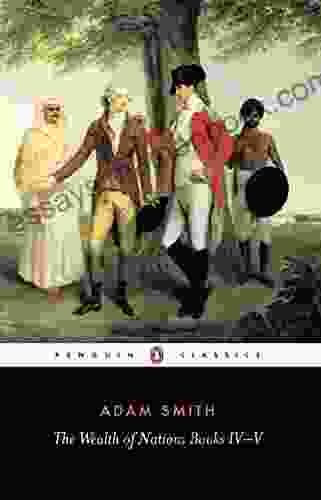Cloth, Gender, and Materiality in West Africa

Cloth is a fundamental part of life in West Africa. It is used for clothing, bedding, curtains, and other household items. It is also used for religious and ceremonial purposes. The production, trade, and use of cloth is a major economic activity in the region.
5 out of 5
| Language | : | English |
| File size | : | 14739 KB |
| Text-to-Speech | : | Enabled |
| Screen Reader | : | Supported |
| Enhanced typesetting | : | Enabled |
| Word Wise | : | Enabled |
| Print length | : | 224 pages |
| Lending | : | Enabled |
Cloth is also a powerful symbol of cultural identity. The different colors, patterns, and textures of cloth can be used to communicate a person's ethnicity, social status, and personal style. For example, in some cultures, white cloth is worn by mourners, while in other cultures, it is worn by brides.
The relationship between cloth, gender, and materiality is complex and multifaceted. In many cultures, women are responsible for the production of cloth. They are the ones who spin the thread, weave the fabric, and dye the cloth. In some cultures, women are also responsible for the design of cloth. The patterns and colors of cloth can be used to express a woman's creativity and individuality.
Men also play an important role in the cloth trade. They are the ones who often control the distribution and sale of cloth. In some cultures, men are also responsible for the design of cloth. The patterns and colors of cloth can be used to express a man's wealth and status.
The materiality of cloth is also important. The different types of cloth can be used to create different effects. For example, cotton is a lightweight and breathable fabric that is often used for clothing. Wool is a warm and durable fabric that is often used for blankets and coats. Silk is a luxurious fabric that is often used for dresses and other formal wear.
The relationship between cloth, gender, and materiality is a complex and ever-changing one. As the cultures of West Africa continue to evolve, so too will the ways in which cloth is used. However, one thing is for sure: cloth will continue to play an important role in the lives of West African people.
Examples of Cloth in West Africa
There are many different types of cloth used in West Africa. Some of the most common types include:
- Cotton: Cotton is a lightweight and breathable fabric that is often used for clothing. It is also used for bedding, curtains, and other household items.
- Wool: Wool is a warm and durable fabric that is often used for blankets and coats. It is also used for making hats, scarves, and other accessories.
- Silk: Silk is a luxurious fabric that is often used for dresses and other formal wear. It is also used for making scarves, ties, and other accessories.
- Kente cloth: Kente cloth is a type of woven fabric that is made in Ghana. It is known for its vibrant colors and geometric patterns. Kente cloth is often used for clothing, bedding, and other household items.
- Aso oke: Aso oke is a type of woven fabric that is made in Nigeria. It is known for its intricate designs and colorful threads. Aso oke is often used for clothing, bedding, and other household items.
The Importance of Cloth in West African Culture
Cloth is more than just a material object in West Africa. It is a symbol of cultural identity, social status, and personal style. The different colors, patterns, and textures of cloth can be used to communicate a person's ethnicity, social status, and personal style. For example, in some cultures, white cloth is worn by mourners, while in other cultures, it is worn by brides.
Cloth is also used for religious and ceremonial purposes. For example, in some cultures, cloth is used to make offerings to the gods. In other cultures, cloth is used to make costumes for religious festivals. Cloth is also used to make clothing for the dead.
The production, trade, and use of cloth is a major economic activity in West Africa. Millions of people are employed in the cloth industry, and cloth is a major source of income for many families.
Cloth is a fundamental part of life in West Africa. It is used for clothing, bedding, curtains, and other household items. It is also used for religious and ceremonial purposes. The production, trade, and use of cloth is a major economic activity in the region. Cloth is also a powerful symbol of cultural identity, social status, and personal style. The different colors, patterns, and textures of cloth can be used to communicate a person's ethnicity, social status, and personal style. The relationship between cloth, gender, and materiality is a complex and ever-changing one. As the cultures of West Africa continue to evolve, so too will the ways in which cloth is used. However, one thing is for sure: cloth will continue to play an important role in the lives of West African people.
5 out of 5
| Language | : | English |
| File size | : | 14739 KB |
| Text-to-Speech | : | Enabled |
| Screen Reader | : | Supported |
| Enhanced typesetting | : | Enabled |
| Word Wise | : | Enabled |
| Print length | : | 224 pages |
| Lending | : | Enabled |
Do you want to contribute by writing guest posts on this blog?
Please contact us and send us a resume of previous articles that you have written.
 Top Book
Top Book Novel
Novel Fiction
Fiction Nonfiction
Nonfiction Literature
Literature Paperback
Paperback Hardcover
Hardcover E-book
E-book Audiobook
Audiobook Bestseller
Bestseller Classic
Classic Mystery
Mystery Thriller
Thriller Romance
Romance Fantasy
Fantasy Science Fiction
Science Fiction Biography
Biography Memoir
Memoir Autobiography
Autobiography Poetry
Poetry Drama
Drama Historical Fiction
Historical Fiction Self-help
Self-help Young Adult
Young Adult Childrens Books
Childrens Books Graphic Novel
Graphic Novel Anthology
Anthology Series
Series Encyclopedia
Encyclopedia Reference
Reference Guidebook
Guidebook Textbook
Textbook Workbook
Workbook Journal
Journal Diary
Diary Manuscript
Manuscript Folio
Folio Pulp Fiction
Pulp Fiction Short Stories
Short Stories Fairy Tales
Fairy Tales Fables
Fables Mythology
Mythology Philosophy
Philosophy Religion
Religion Spirituality
Spirituality Essays
Essays Critique
Critique Commentary
Commentary Glossary
Glossary Bibliography
Bibliography Index
Index Table of Contents
Table of Contents Preface
Preface Introduction
Introduction Foreword
Foreword Afterword
Afterword Appendices
Appendices Annotations
Annotations Footnotes
Footnotes Epilogue
Epilogue Prologue
Prologue Heather Hathaway
Heather Hathaway Magdalena Wszelaki
Magdalena Wszelaki Leah Williams
Leah Williams Greg Strandberg
Greg Strandberg Mona Hanna Attisha
Mona Hanna Attisha Brian Mcgackin
Brian Mcgackin Max Meyer
Max Meyer Jim Morris
Jim Morris Frederick Johnson
Frederick Johnson Ann Perry
Ann Perry Benedikt Koehler
Benedikt Koehler Sophie Mckay
Sophie Mckay Amanda Quick
Amanda Quick Jaime Karl Hudson
Jaime Karl Hudson J M Stengl
J M Stengl Alexander I Bobenko
Alexander I Bobenko Nicola Jane
Nicola Jane Matt Handal
Matt Handal Ursula Keller
Ursula Keller Pretty Tony
Pretty Tony
Light bulbAdvertise smarter! Our strategic ad space ensures maximum exposure. Reserve your spot today!
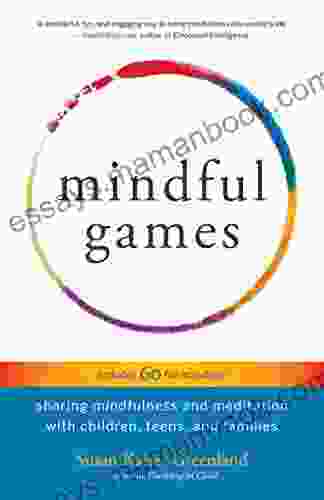
 Demetrius CarterMindful Games: Sharing Mindfulness And Meditation With Children Teens And...
Demetrius CarterMindful Games: Sharing Mindfulness And Meditation With Children Teens And...
 Donald WardThe Trials and Tribulations of Our Life: Exploring the Unpredictable Path of...
Donald WardThe Trials and Tribulations of Our Life: Exploring the Unpredictable Path of... Harold PowellFollow ·15.2k
Harold PowellFollow ·15.2k Eliot FosterFollow ·11.1k
Eliot FosterFollow ·11.1k Corey HayesFollow ·17.5k
Corey HayesFollow ·17.5k George OrwellFollow ·17.4k
George OrwellFollow ·17.4k Eugene ScottFollow ·3k
Eugene ScottFollow ·3k Melvin BlairFollow ·14.8k
Melvin BlairFollow ·14.8k Cole PowellFollow ·15.2k
Cole PowellFollow ·15.2k Virginia WoolfFollow ·15k
Virginia WoolfFollow ·15k
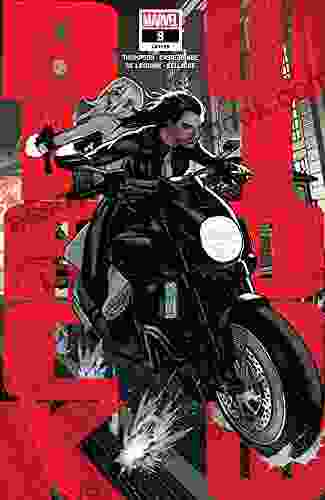
 Dean Butler
Dean ButlerBlack Widow 2024: A Comprehensive Guide to Kelly...
In 2024, Marvel...
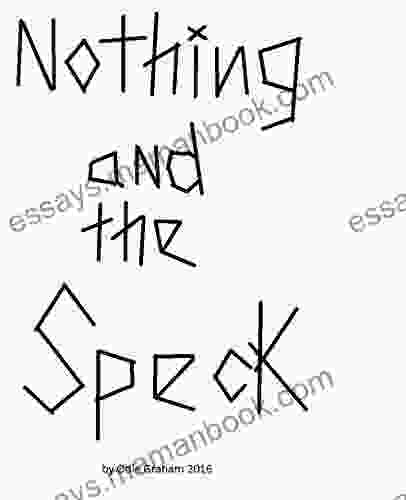
 Gage Hayes
Gage HayesNothing and the Speck: An In-Depth Analysis of Yana...
Yana Toboso's works, particularly the manga...

 Stan Ward
Stan WardThe Best American Poetry 1997: James Tate
The Best American Poetry...
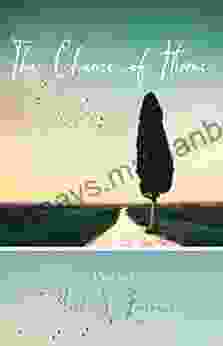
 Corey Green
Corey GreenThe Chance of Home: Exploring the Poetic Landscape of...
Immerse yourself in the evocative world of...
5 out of 5
| Language | : | English |
| File size | : | 14739 KB |
| Text-to-Speech | : | Enabled |
| Screen Reader | : | Supported |
| Enhanced typesetting | : | Enabled |
| Word Wise | : | Enabled |
| Print length | : | 224 pages |
| Lending | : | Enabled |





